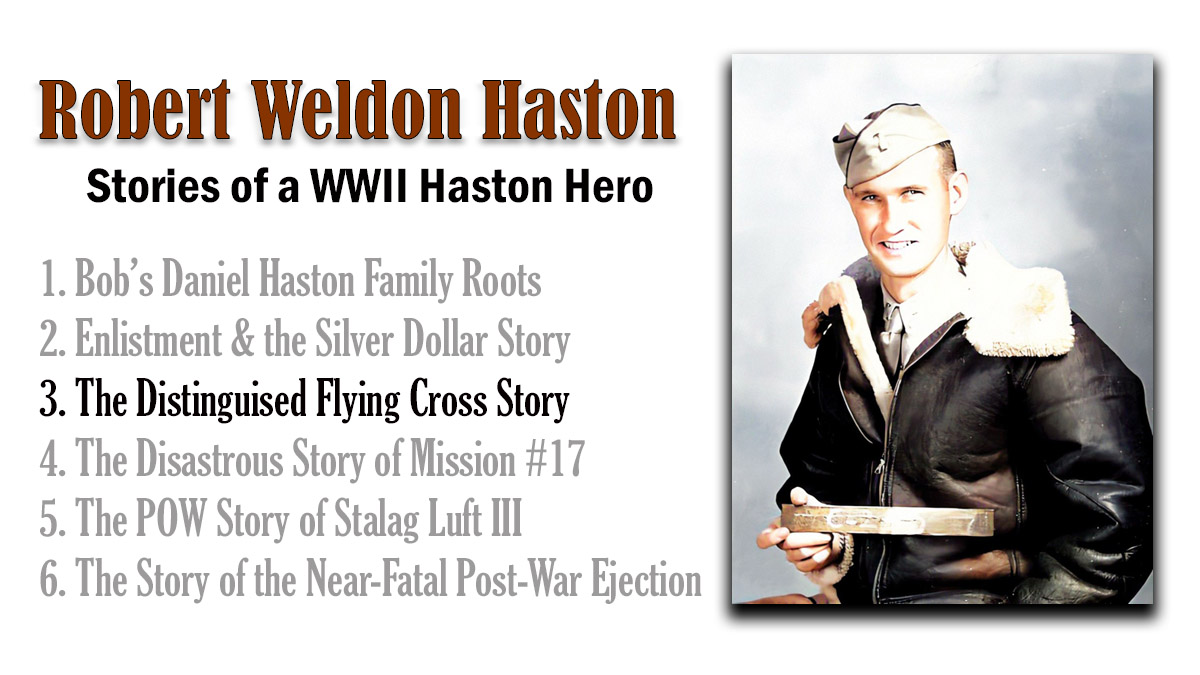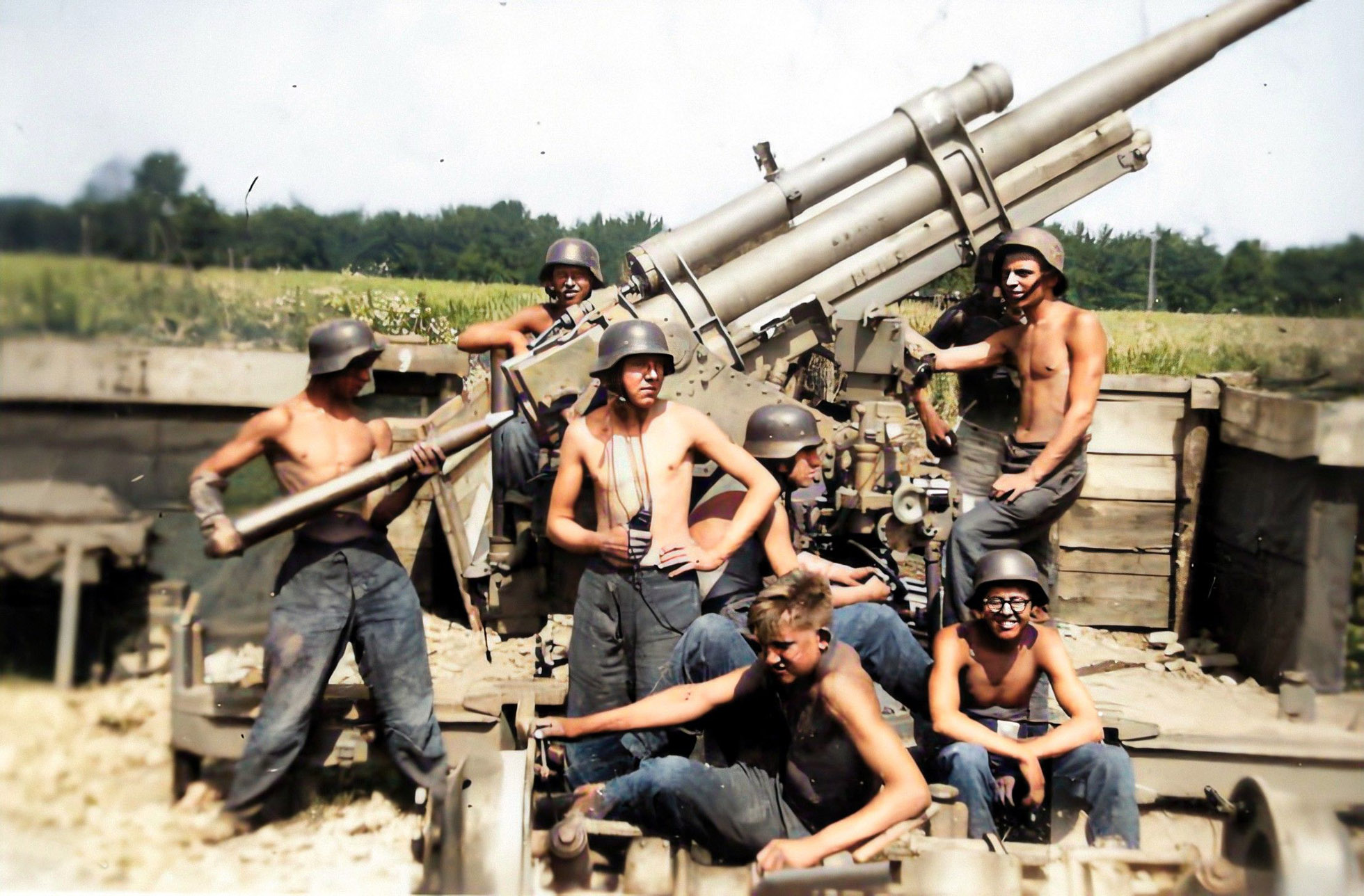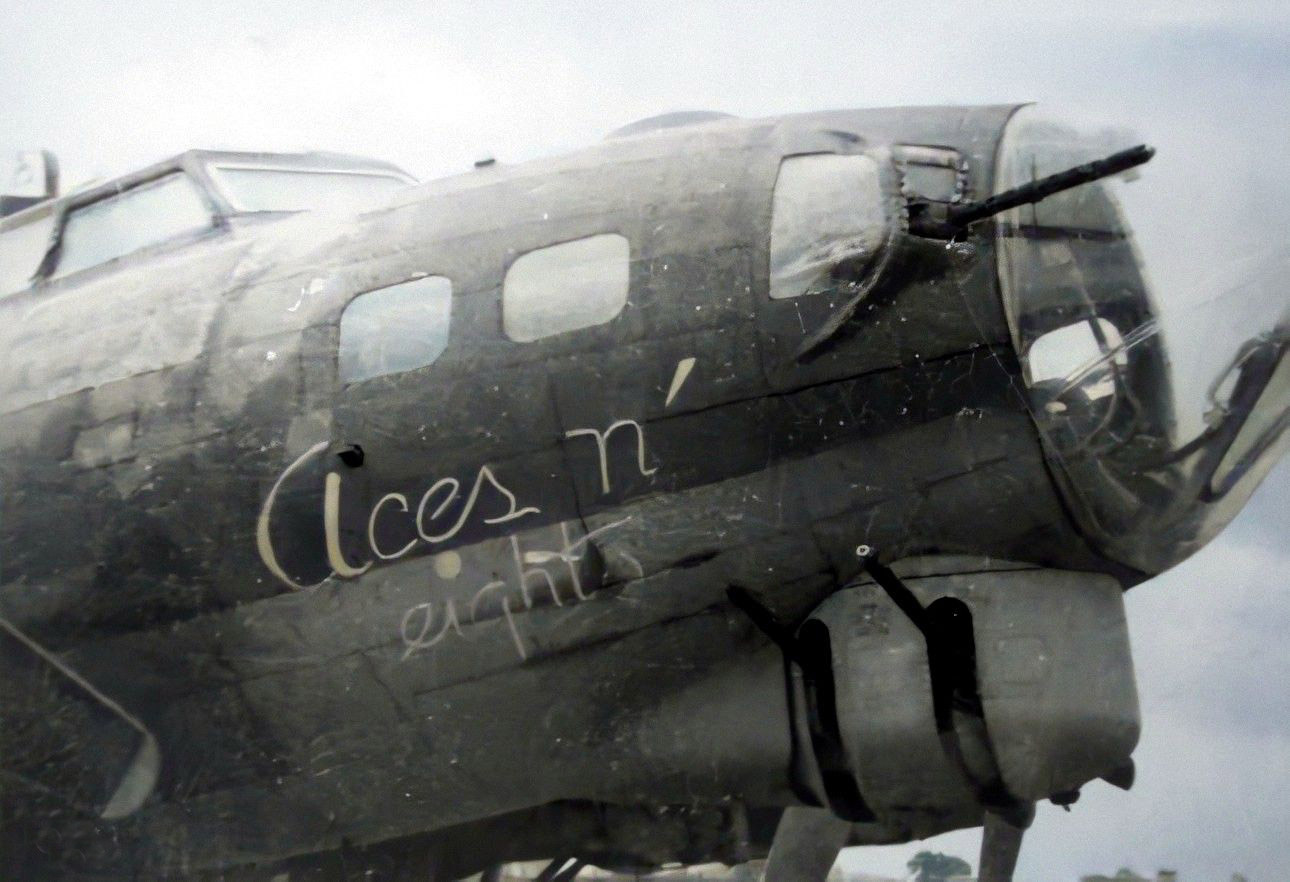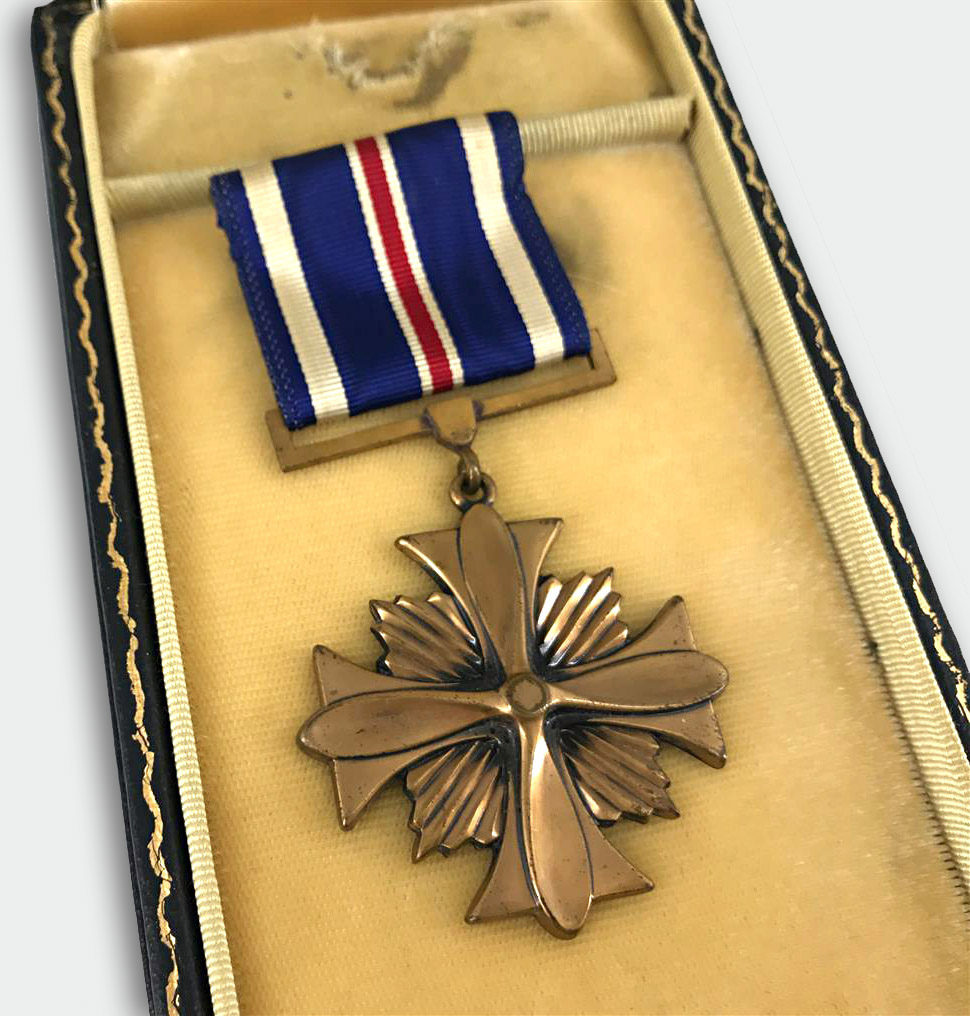Major Bob Haston - The "Distinguished Flying Cross" Experience

What Did it Mean to "Catch Flak" in an Aerial Assault?

The versatile 88mm cannon was Germany’s main heavy antiaircraft—or “flak”—gun during World War II. When an 88mm projectile exploded at altitude, it sent out jagged metal fragments that tore through nearby aircraft. It also left a characteristic black cloud hanging in the sky. Source
“Flak so thick you could get out and walk on it” was a common phrase to describe heavy anti-aircraft fire. Each black cloud was caused by an exploding flak projectile.
Once Allied troops got on the offensive, extensive bombing raids began over Germany and their supply routes. To get the job done, countless bomber raids were organized under the name of Combined Bomber Offensive, or CBO. Starting in June 1943, the round-the-clock bombing began with the British taking on night bombing missions and the U.S. heading daylight raids. Before escort fighters were assigned to protect the bomber squadrons, however, they took on heavy losses due to intercepting fighter aircraft and 88mm flak infested skies they flew through. More
Bob Haston's "Aces n' 8's" B-17 Bomber Catches Heavy Flak

The first mission was a raid on the port of Emden, Germany, on December 11, 1943. Subsequent missions targeted ports, chemical works, and aircraft/engine factories in Germany, as well as V-weapons sites and an airfield in France. During the eighth mission, on January 14, 1944, the crew had a close call during a raid on the V-1 launch site at Gueschart, France. The 527th Bomb Squadron’s January 1944 diary stated that “Lt. Haston in [42-29802 Ruthie II] returned and made a perfect landing with his #3 and #4 engines shot out.” Source
Description of the above event by Bob’s daughter:
Dad (1st Lt. Bob Haston) and his crew in a B-17 named “Aces n’ 8’s” (because of the tail numbers) had completed their part of a bombing run over Germany and had to return early unescorted. They had gone through heavy flak fire and significant damage. The standard operating procedure was to get to the English Channel and bail out close to the coastline to be picked up by fishermen, letting the plane go in the drink. Dad decided he could make it back to the airfield not far from the coast and told his men to eject if they wanted to. As he told it, none did. He made it back to the base with his plane intact and the crew very happy. After filing their flight reports, the “brass” decided it was a fancy piece of flying and awarded him the Distinguished Flying Cross medal. The plane was sent for repair. Dad and his crew picked up their next plane named “Sons of Satan.” -Lynda Haston Britain
More About the Fate of the “Sons of Satan” Plane and its Crew in the Following Article
The Distinguished Flying Cross
The Distinguished Flying Cross (DFC) is our nation’s highest award for extraordinary aerial achievement.
The Distinguished Flying Cross (DFC) is our nation’s highest award for extraordinary aerial achievement. As a valor decoration, it ranks fourth in order of precedence, and is awarded to recipients for heroism while participating in an aerial flight. The Distinguished Flying Cross medal was established by an Act of Congress on July 2, 1926 and the first Distinguished Flying Cross citations were presented to the Pan American Good Will Flight pilots on 2 May 1927 by President Calvin Coolidge. President Coolidge also presented the first Distinguished Flying Cross medal, on 11 June 1927, to then Captain Charles A. Lindbergh of the Army Air Corps Reserve, for his solo flight of 33 ½ hours and 3600 statute miles.
Distinguished Flying Cross Society PRESIDENT - CHUCK SWEENEY

The "Ruthie II" (Bob Haston's "Aces n' 8's") Previous Noble Service
Previous Co-Pilot John Morgan Was Awarded the Congressional Medal of Honor for His Heroic Feats in this same B-17 Bomber
Capt. John C. Morgan earned MOH for bringing ship home virtually with one arm while holding injured pilot back from controls. On 26 July 1943, he flew damaged B-17 #42-29802 back to base after the pilot was seriously injured and the aircraft was badly damaged. For over 2 hours he flew it one-handed because he had to hold the pilot up off the controls. Source
4:54 Video - "Medal of Honor - With One Hand"
If you appreciated this article, please share it with others who might also enjoy it.


2 thoughts on “Major Bob Haston – The Distinguished Flying Cross”
A good story and a good read!
Great War story!